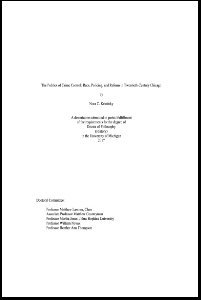By The National Policing Institute
Large and small law enforcement agencies across the United States use specialized police units to solve community problems that traditional patrol units lack the resources or expertise to address. Throughout the decades, specialized units—most notably specialized enforcement units focused on crime control in certain areas—have at times run afoul of law enforcement’s mission and of the Constitution. These instances of police misconduct can destroy the legitimacy of their own and other agencies and severely undermine community and officer safety. In the wake of Tyre Nichols’s tragic death in 2023 at the hands of officers assigned to a Memphis (Tennessee) Police Department specialized enforcement unit, the U.S. Department of Justice (DOJ) heard from police chiefs across the country who were assessing their use of specialized units. The DOJ committed to providing a guide to assist law enforcement leaders, mayors, and communities in assessing the appropriateness of specialized units and ensuring the effective management and necessary accountability of such units. This guide is intended to benefit all state, local, tribal, and territorial (SLTT) agencies irrespective of their history with specialized units or those units’ size. In early 2023, the DOJ’s Office of Community Oriented Policing Services (COPS Office) and the National Policing Institute (NPI) partnered to hold a series of convenings, roundtable discussions, and interviews with law enforcement and community stakeholders to inform this guide. Law enforcement participants represented many types and sizes of SLTT agencies and included active supervisors of specialized units; other participants included individuals from several civil rights and community advocacy groups, many of whom work in and have a deep understanding of the perspectives of communities impacted by specialized units. The participants’ wide range of experiences, expertise, and perspectives played an indispensable role in forming the considerations represented in this guide. The information presented in this guide was gleaned from many dedicated experts concerned with improving policing and creating safe communities. It is presented as considerations because they are just that: considerations, not edicts. Every law enforcement agency is different, serving unique communities and with unique public safety concerns. Recognizing these disparate needs, each agency should use the considerations in this guide in the manner that works best for it. The COPS Office and NPI strongly believe that using these considerations will strengthen an agency’s ability to police in an effective and just manner. The goal of the guide is to give practical, actionable considerations for agencies and communities to help determine whether to form a specialized unit, and if so, how to ensure appropriate management, oversight, and accountability for any such unit. The guide looks at four critical stages of a specialized unit’s development: (1) formation, (2) personnel selection and supervision, (3) management and accountability, and (4) community engagement. For document organization and ease of reading, the stages are presented as chronological or linear, spanning the life cycle of a specialized unit, but the authors realize that many agencies already have existing specialized units and can tailor the use of this guide to their unique needs. Several key considerations are put forth for each section of the guide.
Washington, DC: Office of Community Oriented Policing Services. 2024. 72p.









